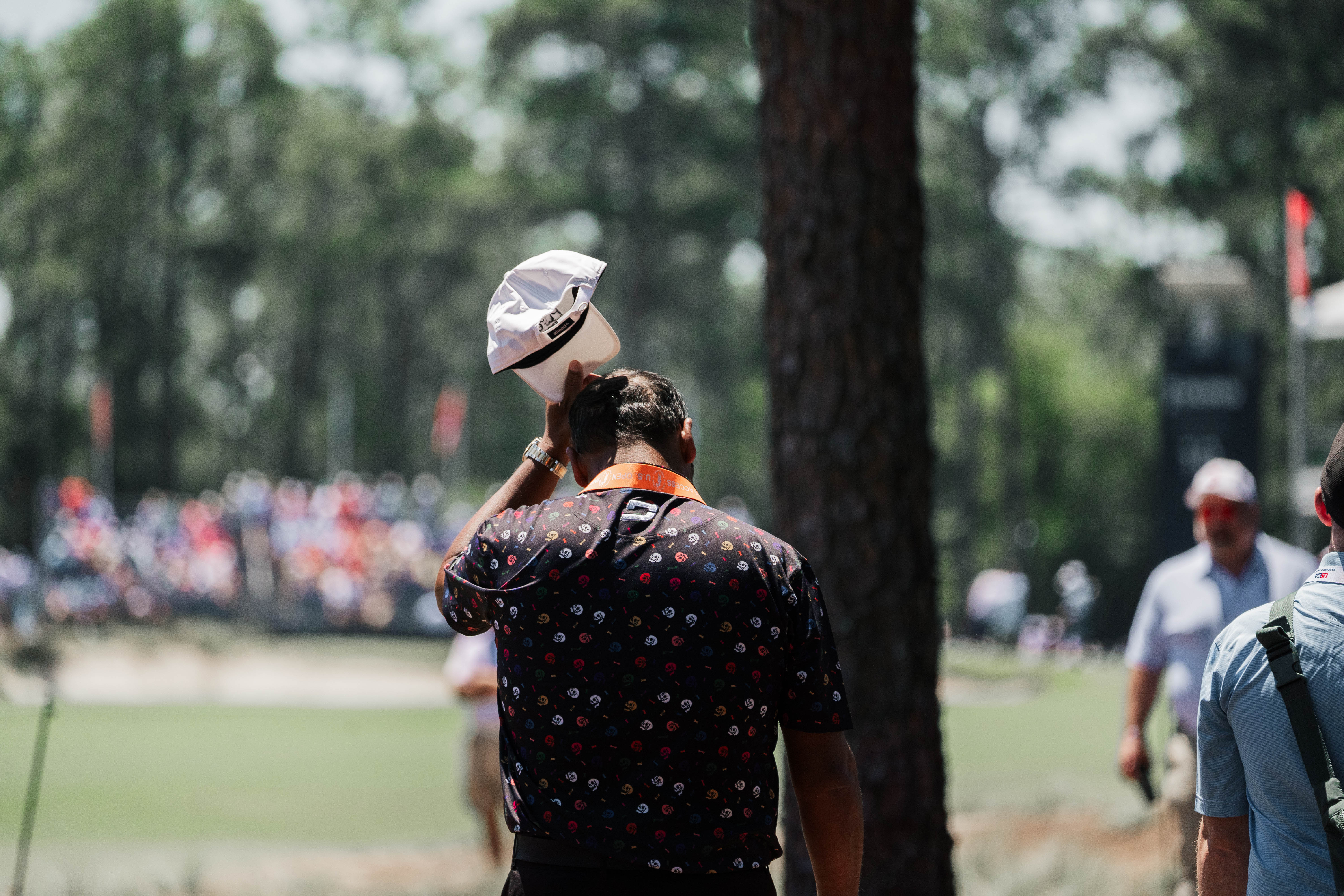By Alex Podlogar
Michael Campbell’s eyes are welling up with tears.
For 182 straight minutes on Tuesday, the 2005 U.S. Open Champion walked Pinehurst No. 2. More accurately, he bounced along No. 2 under piercing blue skies, his infectious energy enveloping those around him, inside and outside the ropes. It helped that a New Zealand documentary crew is following him with a cameraman and a man tirelessly toting a telescoping boom mic.
But that is done now. He hadn’t so much walked No. 2, but crisscrossed it, peeling off from walking the first fairway with Tony Finau because the 17th tee came into view. “This is my favorite hole in the world,” Cambo calls over his shoulder as he ducks under the ropes and floats to the back tee, the perpetually effervescent smile creasing his ebullient face.
When you birdie a tough par-3 three times in four rounds to win the U.S. Open – including on the 71st hole – you don’t have to hide your affection for it.
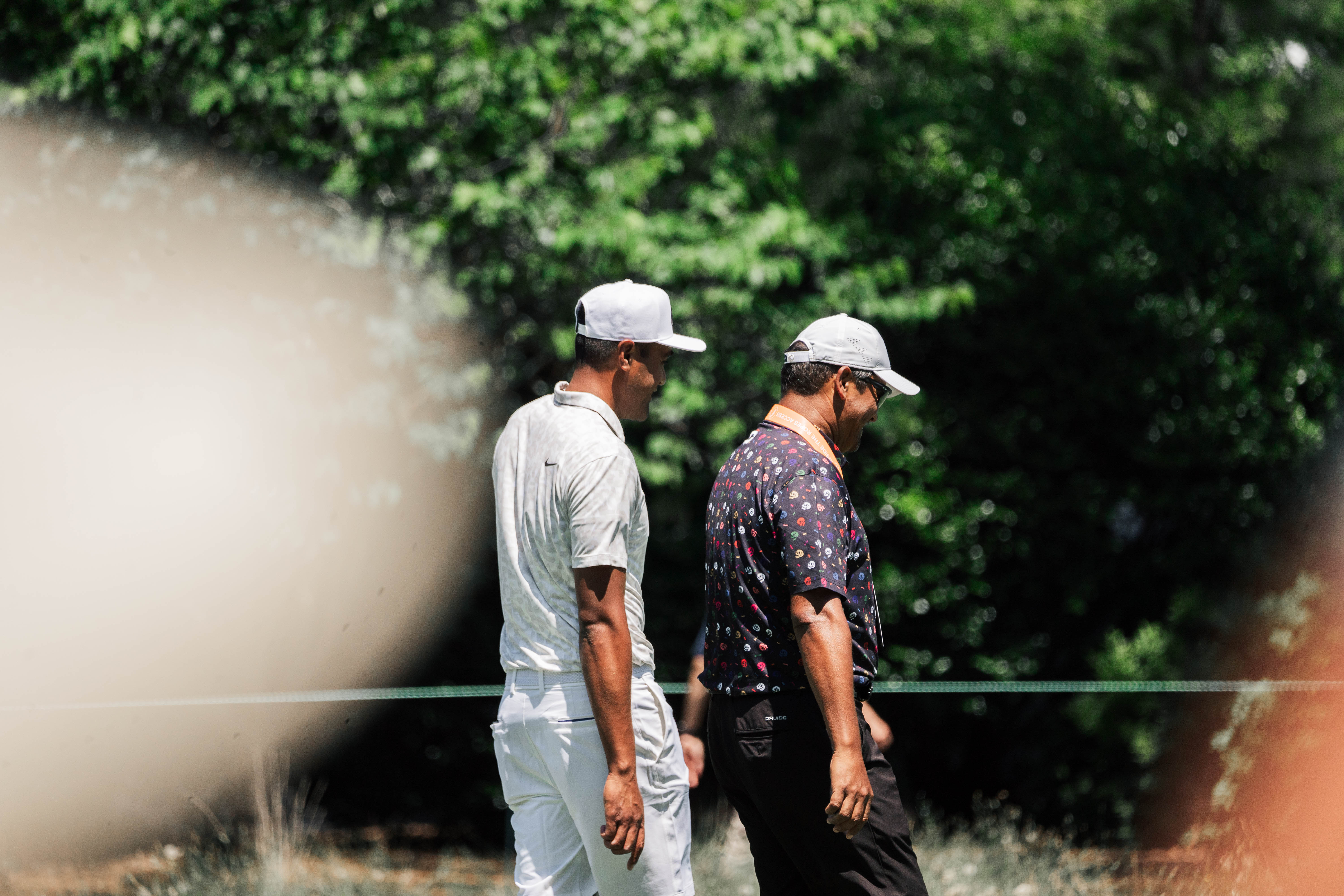
But it is affection that is hitting Campbell now, and it hits him hard. He stands on the back slope of the 18th green, and his throat catches midsentence. You notice his eyes, and they’re wet. This is the same slope he walked down on June 19, 2005, after his triumph by two shots in holding off the best player in the world and perhaps ever, Tiger Woods. It’s the last time he’s stood here, been here. It’s very near the same spot Woods’ caddie and fellow Kiwi, Steve Williams, had hugged the Wellington native mere moments after the final putt, knowing a nation a day ahead already had literally stopped parliament to watch the international broadcast. Michael Campbell had silenced New Zealand’s Beehive on his way to becoming a national hero.
“It’s all flooding back,” Campbell says. “Like, I remember every single shot. Every one. There’s so much I hadn’t…” he pauses, starts again. “So much I hadn’t thought about in so long. It’s been 19 years, but it’s all there. Right there.
“It’s emotional for me.”
Something else hasn’t been forgotten 19 years later.
Michael Campbell himself.
At least not here in Pinehurst.
He starts his day on the putting green, doing an interview with Sky Sports. Tiger walks by, staring straight ahead, kids in the autograph zone screaming his name. All these years later, the same sounds ring around Campbell.
“There are regular roars,” he says, waiting a beat. “And then there are Tiger roars.”
Campbell finishes the interview, greets the documentary crew at the fence and circles the practice green before eventually descending the skywalk. Now, he is among the people.
It doesn’t take long. Not here.
“I just want to shake your hand,” a middle aged gentleman says, approaching Campbell. “Welcome back to your place.”
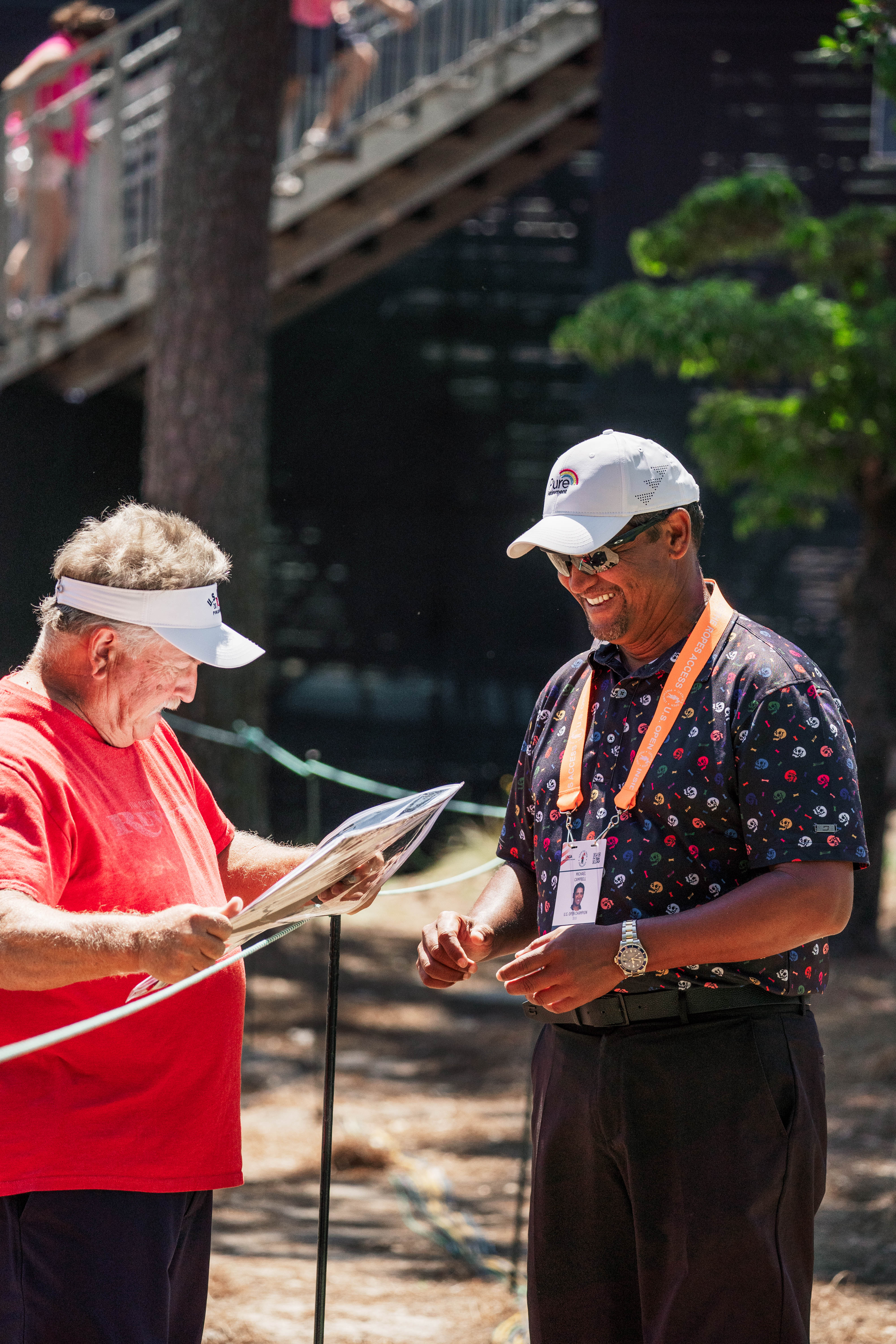
Getting to the 18th green to walk around to the first tee proves difficult. Campbell keeps getting stopped. For autographs. For selfies. A toddler asks in a voice a little too loud, “Who is it, Daddy?” “Michael Campbell,” comes the softened reply. “MICH-EAL CAMP-BELL!” the toddler sing-songs. The gallery surrounding them laughs. So does Cambo.
When he glides onto the 17th tee, the crowd moves closer. He’s rolling now, almost levitating. The mood is as bright as the sun shining down. It’s a perfect day. There’s no humidity. No clouds. No pressure. No worries. No what-ifs. No “Who’s thats?”
“I had 184 on Sunday, and I wanted to hit 7 iron,” Campbell is saying. It’s supposed to be sound for the crew. It’s not. The people have moved in and he’s looking at them, not into the camera. “But, a little downhill, downwind, I’m pumped up. I hit so many good 7 irons that week. Some farther than others. Shaped some different ways. High. Low. But my caddie talked me into an 8 iron.”
From 17 he walks down the sandy path lining the eighth hole. “I want to go to 10,” he says, and takes off. Campbell is 55 now but still athletic. He leads the charge, letting his memory take shape and give direction. The doc crew features young guys. Young guys holding equipment, but still – young guys. “Glad we’re in decent shape,” one of them says as they dig their strides into the sand to keep up.
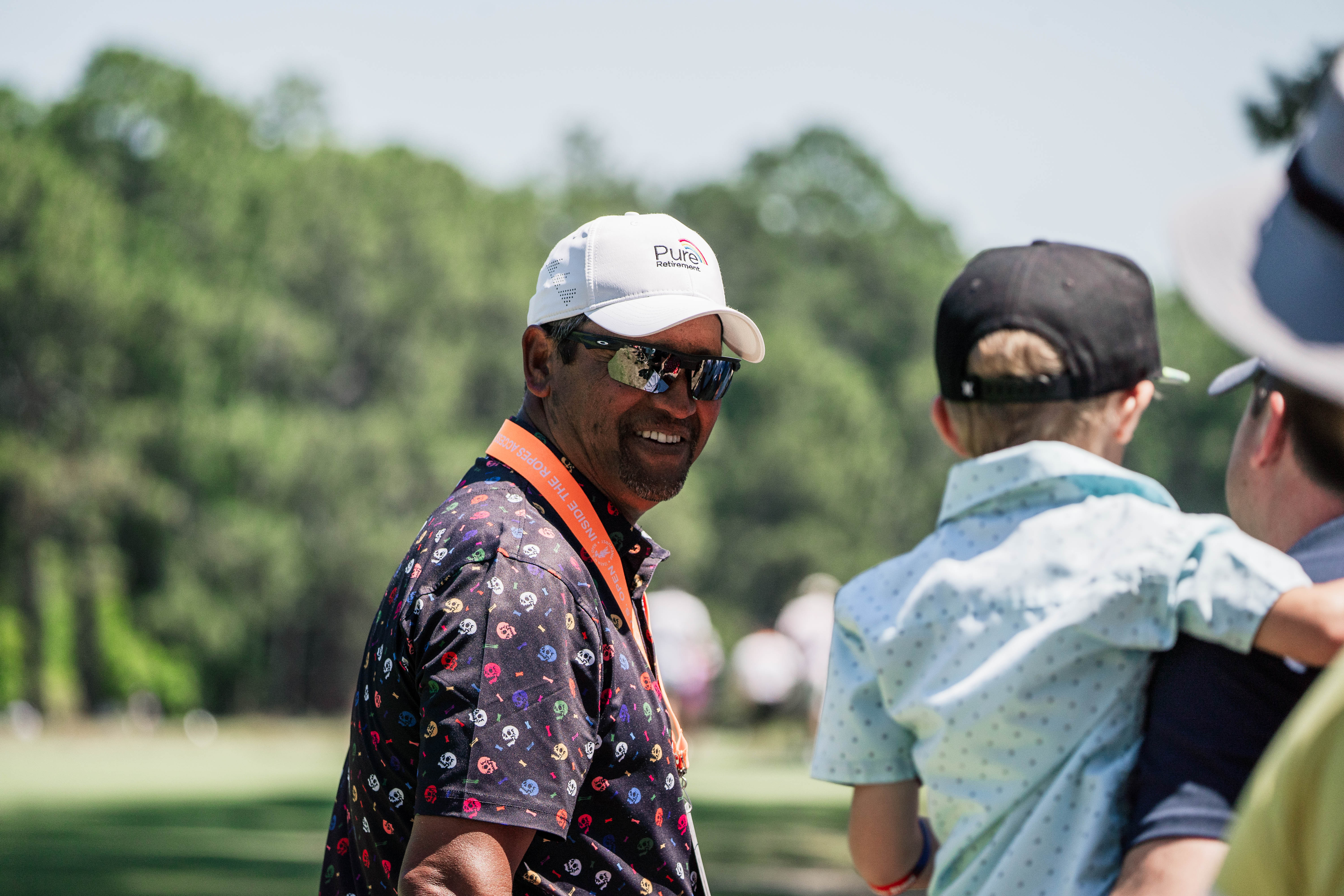
From 10 Campbell sees the back of the 12th green. He figures Scottie Scheffler should be coming into the green soon. He’s right. Scheffler’s caddie is Ted Scott, who 19 years ago caddied for Olin Browne, who had the best seat to watch Campbell shock the world and stave off a charging Tiger. Campbell wants to say hello. Scheffler wants something else.
“I want to know everything about every shot you hit here in the final round,” Scheffler tells him. “I need all the secrets, all your tips.”
“You don’t need them,” Campbell quips.
Another world No. 1 denied by the Kiwi.
He turns from the 13th tee and heads to 15. This par-3 likely saved Campbell in 2005. A poor tee shot left him in the left not-so-greenside bunker, leaving a terribly difficult shot. Campbell hit it to 6 feet and made the putt for par.
“The thing is – and I don’t know why I did this, but it just occurred to me in the middle of the round that day – I could either take Tiger as a threat, or as an opportunity,” Campbell says. “I could either be scared, or see if I was up to the most ultimate challenge on that day. It’s a wonder I didn’t need a sports psychologist to tell me that.”
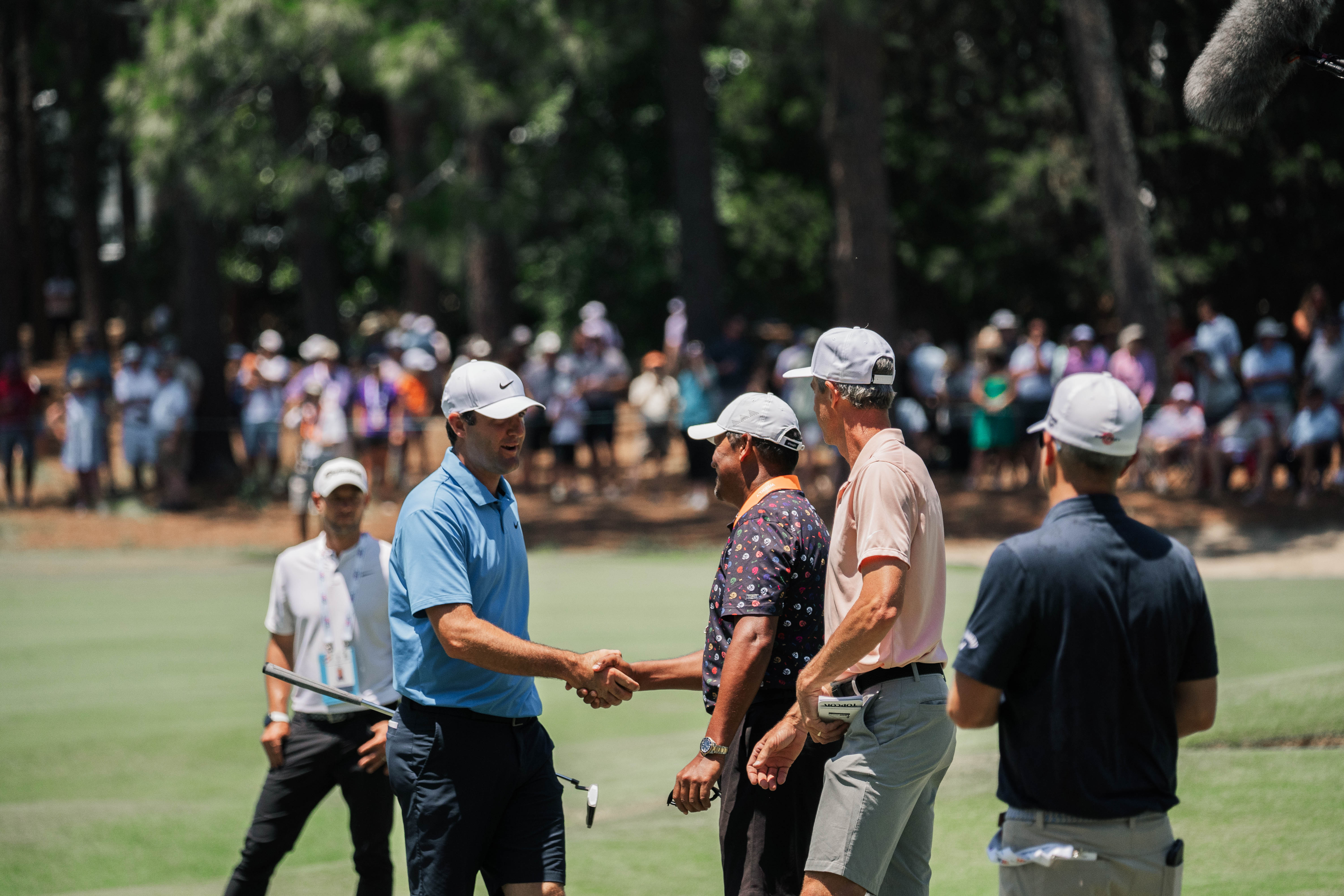
Campbell cuts across and in front of the 16th tee and goes straight to 18. He takes his time here. It’s relatively clear of players, so Campbell walks the length of the hole slowly. He wanders off by himself, stopping three times before reaching the green. The crew knows when to prod and when to fall silent. Cambo is given his space.
He finally finds himself on the green’s back slope. He collects himself and has one more thing he wants to add.
“I was very surprised,” he says, his head slightly nodding, as if he needs to confirm the thought to himself, to come to grips with what he’s about to say. “A lot of people recognized me. I didn’t think that would be true. I’ve heard my name so much today. I’ve been stopped. I’ve signed autographs. Pictures.
“To me, it was just a really nice moment. It really etches my history into this championship, to the U.S. Open.
“But, even more so, to the people of Pinehurst.”
Campbell ends there, and soon walks off. Wherever he’s going, he remembers the way.
